Books and Pocket Guides
Please note that all of the information provided on our website about our products is meant to be informative only. For more information regarding prices and shipping (within Canada only) please visit our store in Newmarket (16655 Yonge Street, Unit #2 Newmarket, ON), phone us (905) 868-9696, or send us an email at [email protected].
Here are a sample of just some of the books and pocket guides we carry at Wild Birds Unlimited Newmarket. We carry books by National Geographic, Sibley, Douglas Tallamy, The Xerces Society, National Wildlife Federation, Claire Walker Leslie, and many more.
Please call us at (905) 868-9696 or visit us in the store to see our current availability!
Books
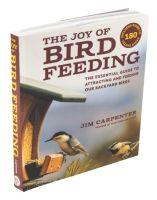 The Joy of Bird Feeding: Filled with useful information and illustrated with more than 800 images and 180 maps, The Joy of Bird Feeding is the essential guide for anyone who loves to feed the birds. The Joy of Bird Feeding is the ultimate reference for backyard bird watchers and bird feeders. It offers practical tips and solutions to attracting and identifying birds, offering the best foods for the birds you want to see, and how to deter those unwanted guests to feeding stations. Each chapter focuses on an important aspect of the hobby and guides readers to the essential steps of bird feeding mastery. In this book, Jim Carpenter, founder and president of Wild Birds Unlimited, shares a lifetime of bird feeding passion and experience, answers common hobby problems and provides fun bird feeding activities to share with family and friends.
The Joy of Bird Feeding: Filled with useful information and illustrated with more than 800 images and 180 maps, The Joy of Bird Feeding is the essential guide for anyone who loves to feed the birds. The Joy of Bird Feeding is the ultimate reference for backyard bird watchers and bird feeders. It offers practical tips and solutions to attracting and identifying birds, offering the best foods for the birds you want to see, and how to deter those unwanted guests to feeding stations. Each chapter focuses on an important aspect of the hobby and guides readers to the essential steps of bird feeding mastery. In this book, Jim Carpenter, founder and president of Wild Birds Unlimited, shares a lifetime of bird feeding passion and experience, answers common hobby problems and provides fun bird feeding activities to share with family and friends.
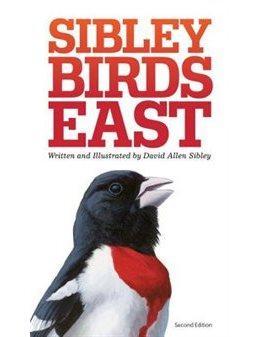 The Sibley Field Guide to Birds of Eastern North America: The Sibley Guide to Birds has quickly become the new standard of excellence in bird identification guides, covering more than 810 North American birds in amazing detail. Now comes in a new portable guide from David Sibley that every birder will want to carry into the field. Compact and comprehensive, this new guide features 650 bird species plus regional populations found east of the Rocky Mountains. Accounts include stunningly accurate illustrations—more than 4,200 in total—with descriptive caption text pointing out the most important field marks. Each entry contains new text concerning frequency, nesting, behavior, food and feeding, voice description, and key identification features. Accounts also include brand-new maps created from information contributed by 110 regional experts across the continent. The Sibley Field Guide to Birds of Eastern North America is an indispensable resource for all birders seeking an authoritative and portable guide to the birds of the East. OUR TOP RECOMMENDATION FOR A FIELD GUIDE TO THE BIRDS OF ONTARIO!
The Sibley Field Guide to Birds of Eastern North America: The Sibley Guide to Birds has quickly become the new standard of excellence in bird identification guides, covering more than 810 North American birds in amazing detail. Now comes in a new portable guide from David Sibley that every birder will want to carry into the field. Compact and comprehensive, this new guide features 650 bird species plus regional populations found east of the Rocky Mountains. Accounts include stunningly accurate illustrations—more than 4,200 in total—with descriptive caption text pointing out the most important field marks. Each entry contains new text concerning frequency, nesting, behavior, food and feeding, voice description, and key identification features. Accounts also include brand-new maps created from information contributed by 110 regional experts across the continent. The Sibley Field Guide to Birds of Eastern North America is an indispensable resource for all birders seeking an authoritative and portable guide to the birds of the East. OUR TOP RECOMMENDATION FOR A FIELD GUIDE TO THE BIRDS OF ONTARIO!
![]() Add Me to your MyWBU Online Order - Include SKU #450802 in Your Order Notes at Checkout.
Add Me to your MyWBU Online Order - Include SKU #450802 in Your Order Notes at Checkout.
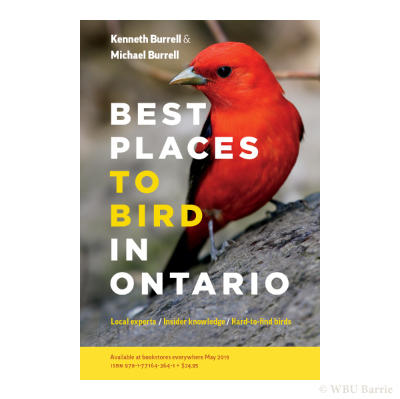 Best Places to Bird in Ontario: Written by Kenneth Burrell and Michael Burrell, Best Places to Bird in Ontario covers the top 30 birding destinations in Ontario, with up-to-date information on hard to find species, directions, birding tips, and much more! In this user-friendly guidebook, local experts Mike and Ken Burrell tour their favourite birding sites, from Point Pelee to Moosonee, Rainy River to Cornwall. Along the way they share insider tips for spotting more than 300 species, advise for exactly when and where to go for the best results, and helpful hints for finding rarely seen birds. Clear maps, beautiful colour photos, and a wealth of useful information make Best Places to Bird in Ontario an invaluable resource that will delight first-time and experienced birders alike. Paperback. 266 pages.
Best Places to Bird in Ontario: Written by Kenneth Burrell and Michael Burrell, Best Places to Bird in Ontario covers the top 30 birding destinations in Ontario, with up-to-date information on hard to find species, directions, birding tips, and much more! In this user-friendly guidebook, local experts Mike and Ken Burrell tour their favourite birding sites, from Point Pelee to Moosonee, Rainy River to Cornwall. Along the way they share insider tips for spotting more than 300 species, advise for exactly when and where to go for the best results, and helpful hints for finding rarely seen birds. Clear maps, beautiful colour photos, and a wealth of useful information make Best Places to Bird in Ontario an invaluable resource that will delight first-time and experienced birders alike. Paperback. 266 pages.
![]() Add Me to your MyWBU Online Order - Include SKU #4517 in Your Order Notes at Checkout. Currently out of stock.
Add Me to your MyWBU Online Order - Include SKU #4517 in Your Order Notes at Checkout. Currently out of stock.
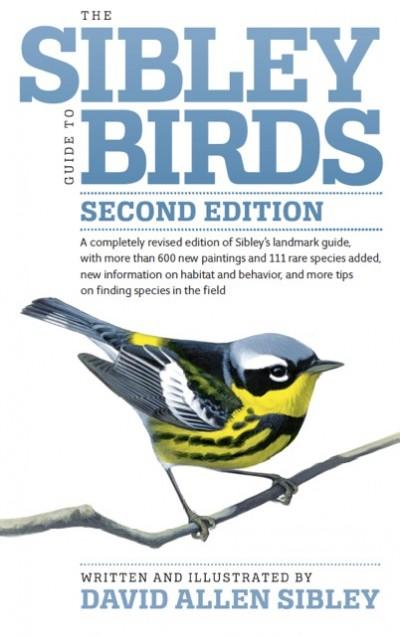 The Sibley Guide to Birds - Second Edition: The Sibley Guide to Birds represents more than 12 years of work by David Allen Sibley. Most two-page spreads show four species, with the images of birds in flight lined up across the top of the pages, birds at rest below that are arranged from the drabbest plumage at the top to the brightest at the bottom. Beneath that is the voice description and then the range map. The book can be thought of as a continuous strip to be scanned horizontally, with birds in flight across the top and range maps across the bottom. Arranging the birds in this orderly way allows the user to make comparisons easily between different plumages of the same species (by scanning up and down) as well as between similar plumages of different species (by scanning left to right).
The Sibley Guide to Birds - Second Edition: The Sibley Guide to Birds represents more than 12 years of work by David Allen Sibley. Most two-page spreads show four species, with the images of birds in flight lined up across the top of the pages, birds at rest below that are arranged from the drabbest plumage at the top to the brightest at the bottom. Beneath that is the voice description and then the range map. The book can be thought of as a continuous strip to be scanned horizontally, with birds in flight across the top and range maps across the bottom. Arranging the birds in this orderly way allows the user to make comparisons easily between different plumages of the same species (by scanning up and down) as well as between similar plumages of different species (by scanning left to right).
![]() Add Me to your MyWBU Online Order - Include SKU #W10317 in Your Order Notes at Checkout. Currently out of stock.
Add Me to your MyWBU Online Order - Include SKU #W10317 in Your Order Notes at Checkout. Currently out of stock.
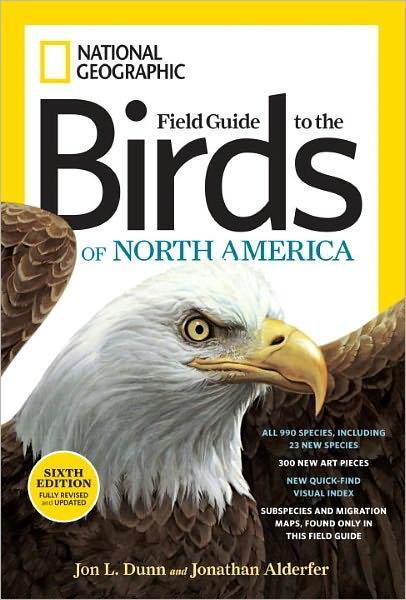 National Geographic Birds of North America (Sixth Edition): Birding is the fastest growing wildlife-related activity in the U.S., and even conservative estimates put the current number of U.S. birders at 50 million. The National Geographic Field Guide to the Birds of North America will be the essential reference for field identification and the cornerstone of any birder's library. This is the ultimate, indispensable bird field guide—comprehensive, authoritative, portable, sturdy, and easier than ever to use.
National Geographic Birds of North America (Sixth Edition): Birding is the fastest growing wildlife-related activity in the U.S., and even conservative estimates put the current number of U.S. birders at 50 million. The National Geographic Field Guide to the Birds of North America will be the essential reference for field identification and the cornerstone of any birder's library. This is the ultimate, indispensable bird field guide—comprehensive, authoritative, portable, sturdy, and easier than ever to use.
![]() Add Me to your MyWBU Online Order - Include SKU #450801 in Your Order Notes at Checkout.
Add Me to your MyWBU Online Order - Include SKU #450801 in Your Order Notes at Checkout.
- OUT OF STOCK -
 Attracting Birds, Butterflies, and Other Backyard Wildlife by David Mizejewski: Since its original publication in 2004, the book has been a seminal part of the National Wildlife Federation’s signature Garden for Wildlife™ program. It was the inspiration for the Animal Planet series Backyard Habitat and was the recipient of the Independent Book Publishers Association’s Benjamin Franklin Award. For over 45 years the Garden for Wildlife program has inspired people to create gardens and landscapes with native plants that provide natural sources of food, water, cover, and places to raise young.
Attracting Birds, Butterflies, and Other Backyard Wildlife by David Mizejewski: Since its original publication in 2004, the book has been a seminal part of the National Wildlife Federation’s signature Garden for Wildlife™ program. It was the inspiration for the Animal Planet series Backyard Habitat and was the recipient of the Independent Book Publishers Association’s Benjamin Franklin Award. For over 45 years the Garden for Wildlife program has inspired people to create gardens and landscapes with native plants that provide natural sources of food, water, cover, and places to raise young.
One of the biggest benefits of gardening with native plants is that it’s great for wildlife. “Creating a wildlife habitat garden is an important way each of us can think globally, act locally and re-connect our own piece of the Earth — our yards and gardens — back into the ecosystem,” said Mizejewski, “The reward is seeing colorful songbirds, beautiful butterflies, pollinating bees and many other fascinating and wonderful species right outside your door and knowing you’re making a difference.”
![]() Add Me to your MyWBU Online Order - Include SKU #452404 in Your Order Notes at Checkout.
Add Me to your MyWBU Online Order - Include SKU #452404 in Your Order Notes at Checkout.
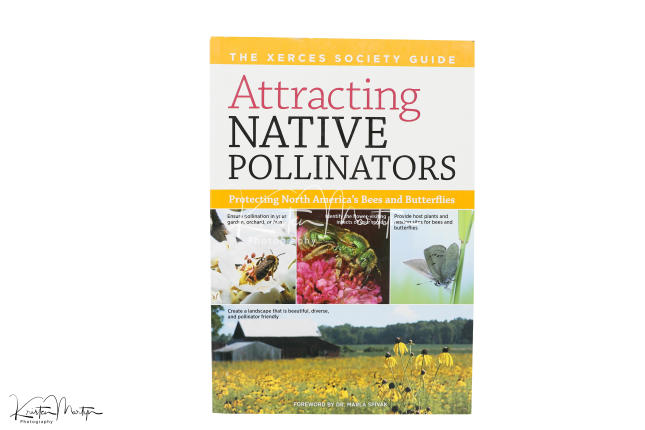 The Xerces Society's Guide to Attracting Native Pollinators: Published in 2011 by Storey Publishing, Attracting Native Pollinators is coauthored by four Xerces Society staff members Eric Mader, Matthew Shepherd, Mace Vaughan, and Scott Black in collaboration with Gretchen LeBuhn, a San Francisco State University botanist and director of the Great Sunflower Project.
The Xerces Society's Guide to Attracting Native Pollinators: Published in 2011 by Storey Publishing, Attracting Native Pollinators is coauthored by four Xerces Society staff members Eric Mader, Matthew Shepherd, Mace Vaughan, and Scott Black in collaboration with Gretchen LeBuhn, a San Francisco State University botanist and director of the Great Sunflower Project.
Attracting Native Pollinators provides a detailed introduction to pollinators and how to protect them. It reflects the latest understanding about creating and managing pollinator habitat. Illustrated with hundreds of color photographs and dozens of specially created illustrations, Attracting Native Pollinators is divided into the following four detailed sections:
- Pollinators and Pollination explains the value of pollinators, and includes informative chapters on the natural history and habitat needs of bees, butterflies, flies, beetles, and wasps.
- Taking Action provides comprehensive information on ways to help pollinators and on creating nest sites and safe foraging areas. It includes guidance on conserving pollinators in all kinds of landscapes: gardens, natural areas, farms, recreation land, even ecoroofs.
- Bees of North America provides help with identifying the more abundant and important bee species, and supplies detailed profiles of more than thirty commonly encountered genera.
Creating a Pollinator-Friendly Landscape shows how various kinds of land, including urban gardens, suburban parks, and farms, can be enhanced to support diverse pollinator populations.
- Sample planting designs and fifty pages of illustrated plant lists facilitate selection of the best plants for any region.
![]() Add Me to your MyWBU Online Order - Include SKU #452406 in Your Order Notes at Checkout.
Add Me to your MyWBU Online Order - Include SKU #452406 in Your Order Notes at Checkout.
 Nature's Best Hope by Doug Tallamy: A New York Times bestseller - Douglas W. Tallamy’s first book, Bringing Nature Home, awakened thousands of readers to an urgent situation: wildlife populations are in decline because the native plants they depend on are fast disappearing. His solution? Plant more natives. In this new book, Tallamy takes the next step and outlines his vision for a grassroots approach to conservation. Nature’s Best Hope shows how homeowners everywhere can turn their yards into conservation corridors that provide wildlife habitats. Because this approach relies on the initiatives of private individuals, it is immune from the whims of government policy. Even more important, it’s practical, effective, and easy—you will walk away with specific suggestions you can incorporate into your own yard.
Nature's Best Hope by Doug Tallamy: A New York Times bestseller - Douglas W. Tallamy’s first book, Bringing Nature Home, awakened thousands of readers to an urgent situation: wildlife populations are in decline because the native plants they depend on are fast disappearing. His solution? Plant more natives. In this new book, Tallamy takes the next step and outlines his vision for a grassroots approach to conservation. Nature’s Best Hope shows how homeowners everywhere can turn their yards into conservation corridors that provide wildlife habitats. Because this approach relies on the initiatives of private individuals, it is immune from the whims of government policy. Even more important, it’s practical, effective, and easy—you will walk away with specific suggestions you can incorporate into your own yard.
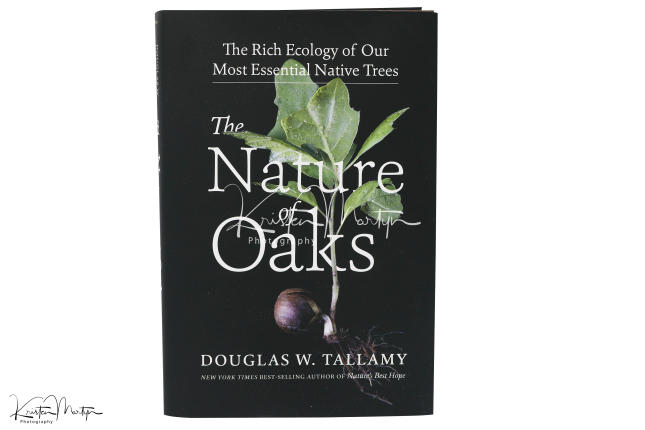 The Nature of Oaks by Doug Tallamy: With Bringing Nature Home, Doug Tallamy changed the conversation about gardening in America. His second book, the New York Times bestseller Nature’s Best Hope, urged homeowners to take conservation into their own hands. Now, he is turning his advocacy to one of the most important species of the plant kingdom—the mighty oak tree.
The Nature of Oaks by Doug Tallamy: With Bringing Nature Home, Doug Tallamy changed the conversation about gardening in America. His second book, the New York Times bestseller Nature’s Best Hope, urged homeowners to take conservation into their own hands. Now, he is turning his advocacy to one of the most important species of the plant kingdom—the mighty oak tree.
Oaks sustain a complex and fascinating web of wildlife. The Nature of Oaks reveals what is going on in oak trees month by month, highlighting the seasonal cycles of life, death, and renewal. From woodpeckers who collect and store hundreds of acorns for sustenance to the beauty of jewel caterpillars, Tallamy illuminates and celebrates the wonders that occur right in our own backyards. He also shares practical advice about how to plant and care for an oak, along with information about the best oak species for your area. The Nature of Oaks will inspire you to treasure these trees and to act to nurture and protect them.
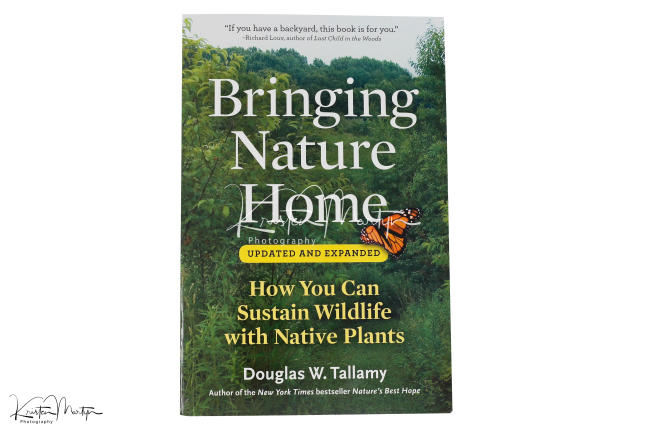 Bringing Nature Home by Doug Tallamy: “A fascinating study of the trees, shrubs, and vines that feed the insects, birds, and other animals in the suburban garden.” —The New York Times
Bringing Nature Home by Doug Tallamy: “A fascinating study of the trees, shrubs, and vines that feed the insects, birds, and other animals in the suburban garden.” —The New York Times
As development and habitat destruction accelerate, there are increasing pressures on wildlife populations. In Bringing Nature Home, Douglas W. Tallamy reveals the unbreakable link between native plant species and native wildlife—native insects cannot, or will not, eat alien plants. When native plants disappear, the insects disappear, impoverishing the food source for birds and other animals.
But there is an important and simple step we can all take to help reverse this alarming trend: everyone with access to a patch of earth can make a significant contribution toward sustaining biodiversity by simply choosing native plants. By acting on Douglas Tallamy's practical and achievable recommendations, we can all make a difference.
![]() Add Me to your MyWBU Online Order - Include SKU #452402 in Your Order Notes at Checkout.
Add Me to your MyWBU Online Order - Include SKU #452402 in Your Order Notes at Checkout.
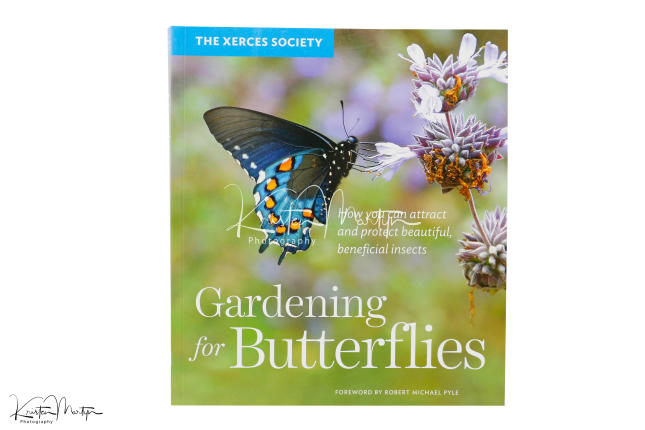 The Xerces Society's Guide to Gardening for Butterflies: “No matter the size or shape of your growing area, this will guide you through creating a butterfly-friendly space.” —Mother Earth News
The Xerces Society's Guide to Gardening for Butterflies: “No matter the size or shape of your growing area, this will guide you through creating a butterfly-friendly space.” —Mother Earth News
Welcome the world’s most exquisite visitors to your garden! Gardening for Butterflies, by the experts at the Xerces Society, introduces you to a variety of butterflies who need our help, and shows you how to design a habitat where they will thrive. This optimistic call to arms is packed with everything you need to create a beautiful, pollinator-friendly garden.
![]() Add Me to your MyWBU Online Order - Include SKU #452405 in Your Order Notes at Checkout.
Add Me to your MyWBU Online Order - Include SKU #452405 in Your Order Notes at Checkout.
 Mother Monarch by Mindy Lighthipe: A beautifully illustrated book for children and families. A mother monarch butterfly finds her way to a milkweed plant, where she lays her eggs and completes her life cycle, as the story picks up with a new caterpillar that grows, transforms, and sets off on a long journey to Mexico.
Mother Monarch by Mindy Lighthipe: A beautifully illustrated book for children and families. A mother monarch butterfly finds her way to a milkweed plant, where she lays her eggs and completes her life cycle, as the story picks up with a new caterpillar that grows, transforms, and sets off on a long journey to Mexico.
![]() Add Me to your MyWBU Online Order - Include SKU #452407 in Your Order Notes at Checkout.
Add Me to your MyWBU Online Order - Include SKU #452407 in Your Order Notes at Checkout.
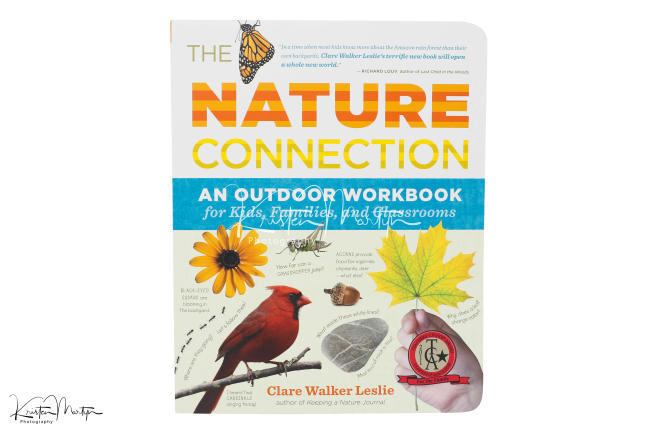 The Nature Connection: An Outdoor Workbook for Kids, Families: Clare Walker Leslie shows kids how to experience nature with all five senses, whether they live in the countryside, a major city, or somewhere in between. Guiding children through inspiring activities like sketching wildlife, observing constellations, collecting leaves, keeping a weather journal, and watching bird migrations, The Nature Connection encourages kids to engage with the world outside and promotes a lifelong love of nature.
The Nature Connection: An Outdoor Workbook for Kids, Families: Clare Walker Leslie shows kids how to experience nature with all five senses, whether they live in the countryside, a major city, or somewhere in between. Guiding children through inspiring activities like sketching wildlife, observing constellations, collecting leaves, keeping a weather journal, and watching bird migrations, The Nature Connection encourages kids to engage with the world outside and promotes a lifelong love of nature.
![]() Add Me to your MyWBU Online Order - Include SKU #452408 in Your Order Notes at Checkout.
Add Me to your MyWBU Online Order - Include SKU #452408 in Your Order Notes at Checkout.
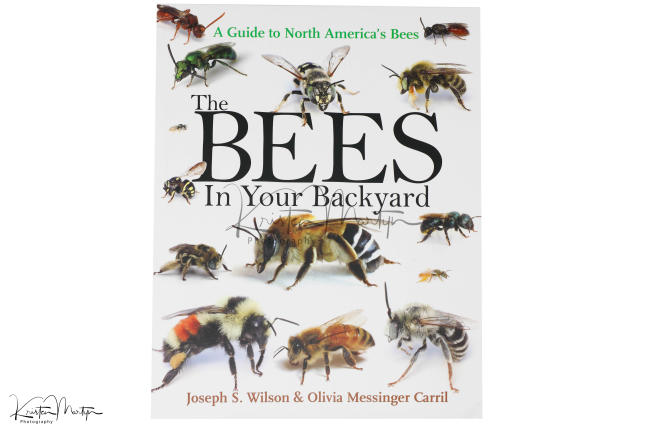 The Bees in Your Backyard: The Bees in Your Backyard provides an engaging introduction to the roughly 4,000 different bee species found in the United States and Canada, dispelling common myths about bees while offering essential tips for telling them apart in the field.
The Bees in Your Backyard: The Bees in Your Backyard provides an engaging introduction to the roughly 4,000 different bee species found in the United States and Canada, dispelling common myths about bees while offering essential tips for telling them apart in the field.
The book features more than 900 stunning color photos of the bees living all around us―in our gardens and parks, along nature trails, and in the wild spaces between. It describes their natural history, including where they live, how they gather food, their role as pollinators, and even how to attract them to your own backyard. Ideal for amateur naturalists and experts alike, it gives detailed accounts of every bee family and genus in North America, describing key identification features, distributions, diets, nesting habits, and more.
Pocket Guides
Unlike many so-called pocket field guides, each of these compact folding guides weighs less than an ounce and fits neatly in a pocket so you can quickly refer to it when venturing outdoors. A great introduction for the novice birdwatcher, astronomer, rockhound or naturalist, the guides contain excellent color illustrations along with concise basic facts.
The plant, animal and mushroom guides list English and Latin names as well as distinguishing features of common North American species. The weather and geology guides use simple, clear diagrams to explain phenomena, and the knots guide identifies practical uses for each knot shown.
Printed on thick card stock and laminated for durability and water resistance, each guide measures 8 1/4" tall by 4" wide when folded.
 Birding 101 by the Cornell Lab of Ornithology: Birders use many kinds of information to identify birds, including size and shape, color pattern, markings, behavior, habitat and calls. This handy guide puts basic birding skills at your fingertips, explaining simple techniques that allow you to sort birds into categories for easier ID. It also discusses equipment needs, resources and tools for the beginning birder, as well as tips for attracting birds to your backyard.
Birding 101 by the Cornell Lab of Ornithology: Birders use many kinds of information to identify birds, including size and shape, color pattern, markings, behavior, habitat and calls. This handy guide puts basic birding skills at your fingertips, explaining simple techniques that allow you to sort birds into categories for easier ID. It also discusses equipment needs, resources and tools for the beginning birder, as well as tips for attracting birds to your backyard.
 A Pocket Naturalist's Guide to Dragonflies and Damselflies: Dragonflies and damselflies are large-winged insects that are usually found in the vicinity of water. Impressive fliers – they can fly forward, backward, glide and hover -they feed on insects they capture on their wing. Despite their large size and prominent jaws, they are harmless to humans and do not bite. This beautifully illustrated guide highlights over 70 familiar and unique species and includes information on their life cycle and features illustrations of common caterpillars and pupae. This guide is an excellent source of portable information and ideal for field use by naturalists of all ages. Laminated for durability, this lightweight, pocket-sized folding guide is an excellent source of portable information and ideal for field use by naturalists of all ages.
A Pocket Naturalist's Guide to Dragonflies and Damselflies: Dragonflies and damselflies are large-winged insects that are usually found in the vicinity of water. Impressive fliers – they can fly forward, backward, glide and hover -they feed on insects they capture on their wing. Despite their large size and prominent jaws, they are harmless to humans and do not bite. This beautifully illustrated guide highlights over 70 familiar and unique species and includes information on their life cycle and features illustrations of common caterpillars and pupae. This guide is an excellent source of portable information and ideal for field use by naturalists of all ages. Laminated for durability, this lightweight, pocket-sized folding guide is an excellent source of portable information and ideal for field use by naturalists of all ages.
 A Pocket Naturalist's Guide to Edible Wild Plants: Some wild edible plants have poisonous look-alikes, and it is important to know the difference when harvesting. Edible Wild Plants is a simplified guide to familiar and widespread species of edible berries, nuts, leaves and roots found in North America. This beautifully illustrated guide identifies over 100 familiar species and includes information on how to harvest their edible parts. It also includes a section on dangerous poisonous plants to avoid that have contact poisons that can blister skin. This convenient guide is a portable source of practical information and ideal for field use.
A Pocket Naturalist's Guide to Edible Wild Plants: Some wild edible plants have poisonous look-alikes, and it is important to know the difference when harvesting. Edible Wild Plants is a simplified guide to familiar and widespread species of edible berries, nuts, leaves and roots found in North America. This beautifully illustrated guide identifies over 100 familiar species and includes information on how to harvest their edible parts. It also includes a section on dangerous poisonous plants to avoid that have contact poisons that can blister skin. This convenient guide is a portable source of practical information and ideal for field use.
 Gardening for Birds by The Cornell Lab of Ornithology: A bird-friendly garden provides songbirds with food, water and shelter and can increase the number and diversity of your avian visitors. This guide provides step-by-step instructions for creating bird habitats, including planning and maintaining your birdscape, selecting water features, and choosing appropriate native trees, shrubs, and flowers. It includes ideas for collecting and sharing knowledge about the birds your garden attracts, plus a checklist of sources for related videos, apps, and more. A portion of the proceeds from the sale of this guide support continued educational activities by The Cornell Lab of Ornithology.
Gardening for Birds by The Cornell Lab of Ornithology: A bird-friendly garden provides songbirds with food, water and shelter and can increase the number and diversity of your avian visitors. This guide provides step-by-step instructions for creating bird habitats, including planning and maintaining your birdscape, selecting water features, and choosing appropriate native trees, shrubs, and flowers. It includes ideas for collecting and sharing knowledge about the birds your garden attracts, plus a checklist of sources for related videos, apps, and more. A portion of the proceeds from the sale of this guide support continued educational activities by The Cornell Lab of Ornithology.
 Nest and Eggs by the Cornell Lab of Ornithology: This guide is a convenient primer for locating and observing nests. It offers information on the basic types of nest structures, typical nesting habitat for each species, number of eggs a nest may contain, what the eggs look like, and more. Also included are facts on nest-related bird behaviors.
Nest and Eggs by the Cornell Lab of Ornithology: This guide is a convenient primer for locating and observing nests. It offers information on the basic types of nest structures, typical nesting habitat for each species, number of eggs a nest may contain, what the eggs look like, and more. Also included are facts on nest-related bird behaviors.
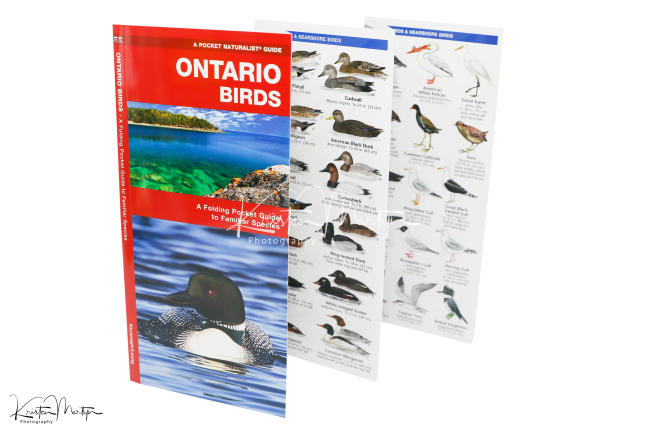 A Pocket Naturalist's Guide to Ontario's Birds: Ontario is the permanent or migratory home of 490 species of birds, including the provincial bird, the common loon. This beautifully illustrated guide highlights over 140 familiar and unique species and includes an ecoregion map featuring prominent bird-viewing areas. Laminated for durability, this lightweight, pocket-sized folding guide is an excellent source of portable information and ideal for field use by visitors and residents alike.
A Pocket Naturalist's Guide to Ontario's Birds: Ontario is the permanent or migratory home of 490 species of birds, including the provincial bird, the common loon. This beautifully illustrated guide highlights over 140 familiar and unique species and includes an ecoregion map featuring prominent bird-viewing areas. Laminated for durability, this lightweight, pocket-sized folding guide is an excellent source of portable information and ideal for field use by visitors and residents alike.
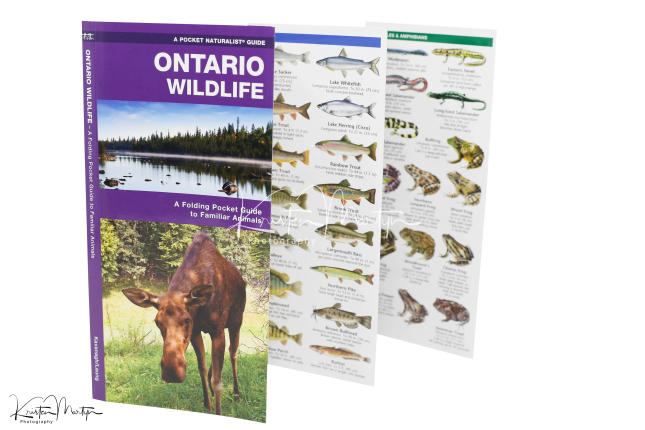 A Pocket Naturalist's Guide to Ontario's Wildlife: From the Boreal Shield to virgin interior forests to the Great Lakes Basin, Ontario is home to thousands of species of animals. This beautifully illustrated guide highlights over 140 familiar and unique species of mammals, birds, reptiles, amphibians, fishes and butterflies/insects and includes a map featuring prominent wildlife-viewing areas. Laminated for durability, this lightweight, pocket-sized folding guide is an excellent source of portable information and ideal for field use by visitors and residents alike.
A Pocket Naturalist's Guide to Ontario's Wildlife: From the Boreal Shield to virgin interior forests to the Great Lakes Basin, Ontario is home to thousands of species of animals. This beautifully illustrated guide highlights over 140 familiar and unique species of mammals, birds, reptiles, amphibians, fishes and butterflies/insects and includes a map featuring prominent wildlife-viewing areas. Laminated for durability, this lightweight, pocket-sized folding guide is an excellent source of portable information and ideal for field use by visitors and residents alike.
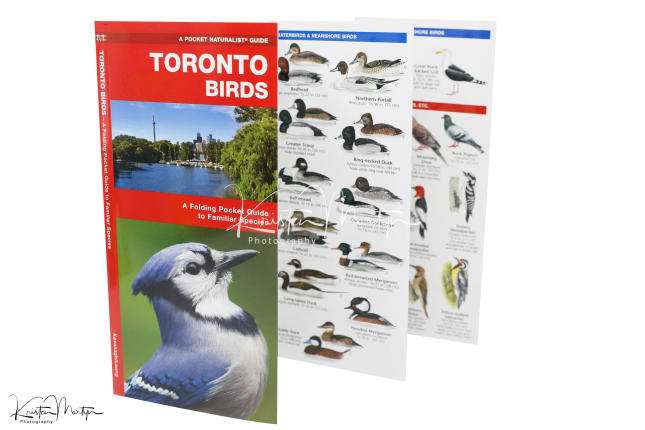 A Pocket Naturalist's Guide to Toronto's Birds: Toronto is the permanent or temporary home of nearly 400 species of birds. This beautifully illustrated guide highlights over 140 familiar and unique species and includes map featuring the prominent birding hotspots in the Greater Toronto Area. Laminated for durability, this lightweight, pocket-sized folding guide is an excellent source of portable information and ideal for field use by visitors and residents alike.
A Pocket Naturalist's Guide to Toronto's Birds: Toronto is the permanent or temporary home of nearly 400 species of birds. This beautifully illustrated guide highlights over 140 familiar and unique species and includes map featuring the prominent birding hotspots in the Greater Toronto Area. Laminated for durability, this lightweight, pocket-sized folding guide is an excellent source of portable information and ideal for field use by visitors and residents alike.
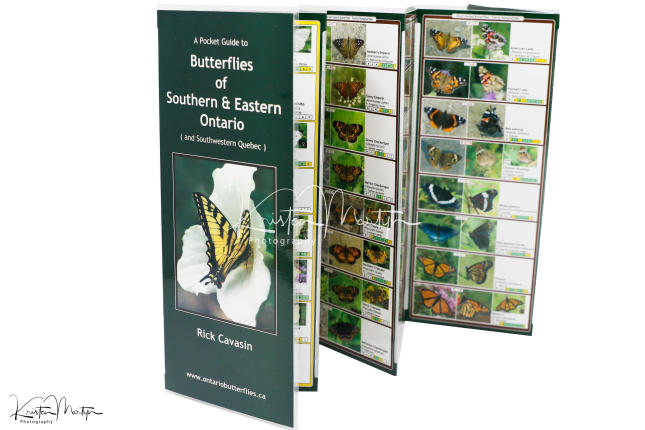 Pocket Guide to Butterflies of Southern and Eastern Ontario: The Pocket Guide to Butterflies of Southern and Eastern Ontario is a beautiful fully laminated, lightweight, durable and weatherproof field guide to the butterflies found in Southern/Eastern Ontario. This guide features 110 species (ranging from common to rare) and 245 nature-pose field images for identification (showing both dorsal and ventral views). Separate images of male and female butterflies as well as seasonal and regional variants are also shown. Each species is accompanied by information about their size and status as well as flight season charts. The Pocket Guide to Butterflies of Southern and Eastern Ontario has an accordion fold when opens to show all the species, so there is no need to flip pages back and forth. Take it anywhere!
Pocket Guide to Butterflies of Southern and Eastern Ontario: The Pocket Guide to Butterflies of Southern and Eastern Ontario is a beautiful fully laminated, lightweight, durable and weatherproof field guide to the butterflies found in Southern/Eastern Ontario. This guide features 110 species (ranging from common to rare) and 245 nature-pose field images for identification (showing both dorsal and ventral views). Separate images of male and female butterflies as well as seasonal and regional variants are also shown. Each species is accompanied by information about their size and status as well as flight season charts. The Pocket Guide to Butterflies of Southern and Eastern Ontario has an accordion fold when opens to show all the species, so there is no need to flip pages back and forth. Take it anywhere!
Dimensions: Folded 4” x 10” and open 28” x 10”
![]() Add Me to your MyWBU Online Order - Include SKU #4510 in Your Order Notes at Checkout.
Add Me to your MyWBU Online Order - Include SKU #4510 in Your Order Notes at Checkout.
 Sibley's Pocket Guide - Backyard Birds of Ontario and Quebec: The Sibley Pocket Guide Birds of Ontario and Quebec is the perfect pocket-sized, folding guide for the bird lover and nature enthusiast. This beautiful guide highlights over 69 familiar species with artworks by the talented Ornithologist and bird illustrator. Waterproof for durability, this handy guide is a great source of portable information and ideal for field use by novices and experts alike.
Sibley's Pocket Guide - Backyard Birds of Ontario and Quebec: The Sibley Pocket Guide Birds of Ontario and Quebec is the perfect pocket-sized, folding guide for the bird lover and nature enthusiast. This beautiful guide highlights over 69 familiar species with artworks by the talented Ornithologist and bird illustrator. Waterproof for durability, this handy guide is a great source of portable information and ideal for field use by novices and experts alike.
![]() Add Me to your MyWBU Online Order - Include SKU #450701 in Your Order Notes at Checkout.
Add Me to your MyWBU Online Order - Include SKU #450701 in Your Order Notes at Checkout.
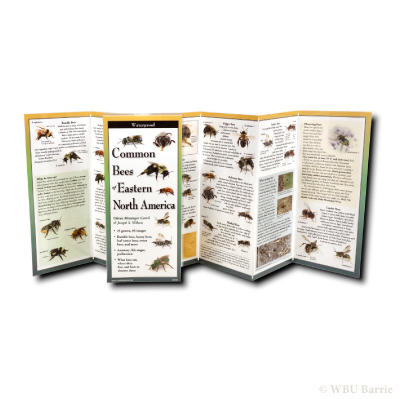 Sibley's Pocket Guide – Common Bees of Eastern North America: The Sibley's Common Bees of Eastern North America Pocket Guide is a virtually indestructible, waterproof folding guide that covers the most frequently seen species in our region. The perfect size for your glove box, backpack or window ledge, the guide features 20 common bee groups with artworks by Joseph S. Wilson and Olivia Messinger Carril, co-authors of The Bees in your Backyard. Waterproof for durability, this handy guide is a great source of portable information and ideal for field use by novices and experts alike.
Sibley's Pocket Guide – Common Bees of Eastern North America: The Sibley's Common Bees of Eastern North America Pocket Guide is a virtually indestructible, waterproof folding guide that covers the most frequently seen species in our region. The perfect size for your glove box, backpack or window ledge, the guide features 20 common bee groups with artworks by Joseph S. Wilson and Olivia Messinger Carril, co-authors of The Bees in your Backyard. Waterproof for durability, this handy guide is a great source of portable information and ideal for field use by novices and experts alike.
Handy fold-out format: 6 panels each 4″ X 9″.
![]() Add Me to your MyWBU Online Order - Include SKU #451904 in Your Order Notes at Checkout.
Add Me to your MyWBU Online Order - Include SKU #451904 in Your Order Notes at Checkout.
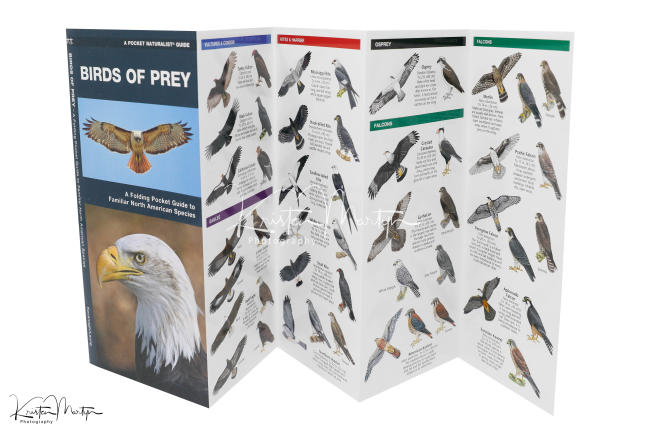 Birds of Prey (Pocket Naturalist® Guide): This richly illustrated folding guide from Waterford Press highlights almost all North American species perching and in flight. Also notes raptor flyways and migratory hotspots. Information is presented logically based on what the viewer is most likely to observe. Lightweight, laminated format makes this guide perfect for the field. Compact 4” x 8” size opens out to 8” x 22”. Color pictures and information are located on both sides of the card. Perfect introductory guide for all ages and experience levels.
Birds of Prey (Pocket Naturalist® Guide): This richly illustrated folding guide from Waterford Press highlights almost all North American species perching and in flight. Also notes raptor flyways and migratory hotspots. Information is presented logically based on what the viewer is most likely to observe. Lightweight, laminated format makes this guide perfect for the field. Compact 4” x 8” size opens out to 8” x 22”. Color pictures and information are located on both sides of the card. Perfect introductory guide for all ages and experience levels.
![]() Add Me to your MyWBU Online Order - Include SKU # in Your Order Notes at Checkout.
Add Me to your MyWBU Online Order - Include SKU # in Your Order Notes at Checkout.
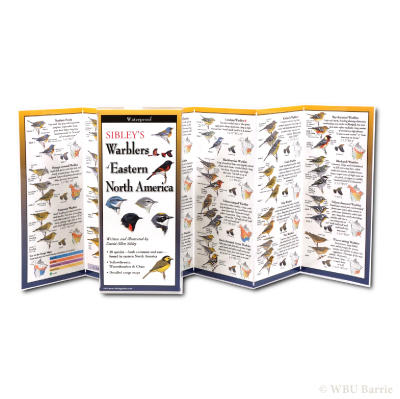 Sibley's Pocket Guide - Warblers of Eastern North America: The Sibley's Warblers of Eastern North America Pocket Guide is a virtually indestructible, waterproof folding guide that covers the most frequently seen species in our region. The perfect size for your glove box, backpack or window ledge, the guide features 38 species with artworks by the talented Ornithologist and bird illustrator. Waterproof for durability, this handy guide is a great source of portable information and ideal for field use by novices and experts alike.
Sibley's Pocket Guide - Warblers of Eastern North America: The Sibley's Warblers of Eastern North America Pocket Guide is a virtually indestructible, waterproof folding guide that covers the most frequently seen species in our region. The perfect size for your glove box, backpack or window ledge, the guide features 38 species with artworks by the talented Ornithologist and bird illustrator. Waterproof for durability, this handy guide is a great source of portable information and ideal for field use by novices and experts alike.
Handy fold-out format: 6 panels each 4″ X 9″.
![]() Add Me to your MyWBU Online Order - Include SKU #451902 in Your Order Notes at Checkout.
Add Me to your MyWBU Online Order - Include SKU #451902 in Your Order Notes at Checkout.
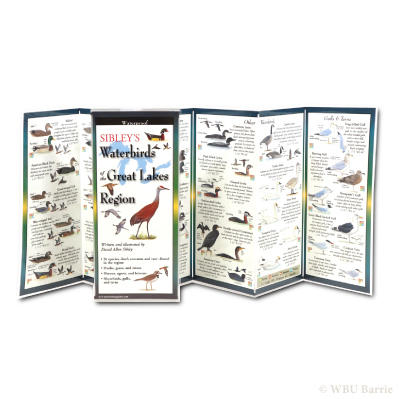 Sibley's Pocket Guide – Waterbirds of the Great Lakes Region: The Sibley’s Waterbirds of the Great Lakes Region Pocket Guide is a virtually indestructible, waterproof folding guide that covers the most frequently seen species in our region. The perfect size for your glove box, backpack or window ledge, the guide features 51 species with artworks by the talented Ornithologist and bird illustrator. Waterproof for durability, this handy guide is a great source of portable information and ideal for field use by novices and experts alike.
Sibley's Pocket Guide – Waterbirds of the Great Lakes Region: The Sibley’s Waterbirds of the Great Lakes Region Pocket Guide is a virtually indestructible, waterproof folding guide that covers the most frequently seen species in our region. The perfect size for your glove box, backpack or window ledge, the guide features 51 species with artworks by the talented Ornithologist and bird illustrator. Waterproof for durability, this handy guide is a great source of portable information and ideal for field use by novices and experts alike.
Handy fold-out format: 6 panels each 4″ X 9″.
![]() Add Me to your MyWBU Online Order - Include SKU #451903 in Your Order Notes at Checkout.
Add Me to your MyWBU Online Order - Include SKU #451903 in Your Order Notes at Checkout.

